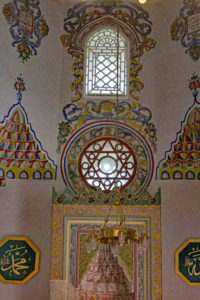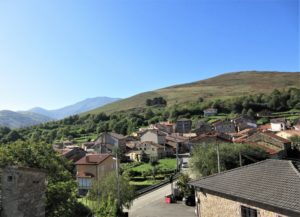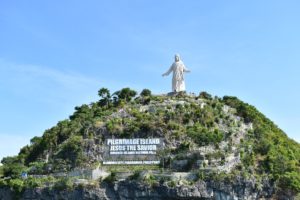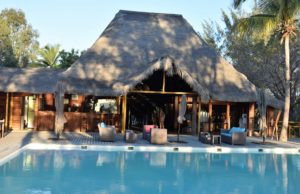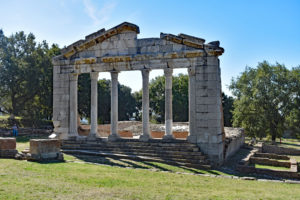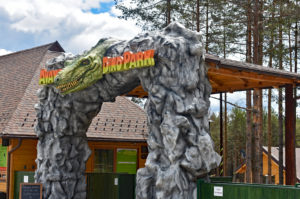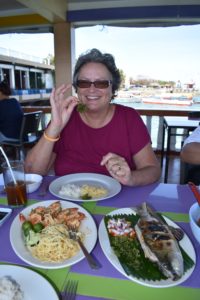The Philippines has 7,641 islands and in our two-month trip, we were never going to visit them all. However, to get a head start, we visited the Hundred Islands National Park, which despite its name, comprises 123 islands/islets at high tide and 124 at low.
The starting point is Alaminos, an hour’s drive from our hotel in Bolinao on North Luzon Island. We booked tickets the day before in the large office with around a dozen plus eager young staff: the only one over 30, was fast asleep at her desk.
We arrived at 9am, handed over a refundable 200 Peso/£3.30 deposit for two bags for bringing back our rubbish, separated into normal and recyclable waste. We used the rest rooms which according to the sign, charged “5 Peso to urinate and 10 Peso to defecate” – all signs in the Philippines are in English.
Huge blackboards on the jetty were used to allocate boats and skipper: to ensure sufficient space for the three of us, our guide Carlos had chosen a boat for 8 to 10. Alfred was our boat and Christian our skipper had a nameless mate. Life jackets donned, we set off with each of us sitting on uncushioned wooden planks. The wooden boat was narrow and had two bamboo outriggers on both sides which meant hopping over a large wooden bar when getting in and out.
The boat was ours for the day and we had the option of stopping at as many of the islands as we wanted. However, many are small, uninhabited and their mushroom like appearance has been caused by limestone erosion over the years, making them difficult to get on.
Our first stop was Governors Island, where we got off with the aid of a plastic chair, and then then climbed 141 steps to the viewing deck. This is the largest of the islands and has a guest house that can be rented if you don’t fancy camping on the beach. Carlos pointed out bangar trees whose fruit emits a foul smell, thankfully not in our direction.
In the distance we saw Pilgrimage Island, with its sign, ‘Jesus the Saviour’ and statue Christ the Redeemer but we decided not to stop and climb up to the statue as it was busy, hot and humid. We also saw Virgin Island, said to be shaped like the body of a woman where you could go ‘helmet diving’. We weren’t sure what was involved, but thought it wasn’t for us.
Quezon Island, with a gold-coloured statue of the late President Manuel Quezon, is known as the ‘family-friendly’ island because of its shallow waters which ideal for snorkelling. Here we got off and walked across a narrow, swinging bridge to another island, the starting point for a zip line back (which we didn’t do).
We sailed past Children’s Island, the third most popular, where picnic huts and tables could be rented. Some islands were named, and we passed Braganza, Romulo and Lopez, whilst others were just small outcrops of rock and greenery.
Like Quezon, Marcos Island is named after a late president and at its centre there is a cavern with a deep pool, which you can jump into from a 20-foot high platform.
At Scout Island, we walked through a cave to a restaurant on stilts where we had a refreshing boku (coconut) juice and watched the fish swimming in the clear waters, obviously waiting for scraps of food.
We could have stopped at others, but it was a very hot day and we simply enjoyed being on the water with a cool breeze.
Having arrived back on terra-firma, we headed to a restaurant called Maxine by the Sea for a late lunch, where we sat on a deck over the water. There was a lovely breeze and as we were by the sea, fish was appropriate. Both the scampi grilled in garlic butter and noodles and bangus (milk fish) deboned and stuffed with ginger and herbs were delicious and I loved the sea grape garnish (tiny little grapes). It was the perfect end to a lovely day and meant we only had another 7500 islands to cross off.
